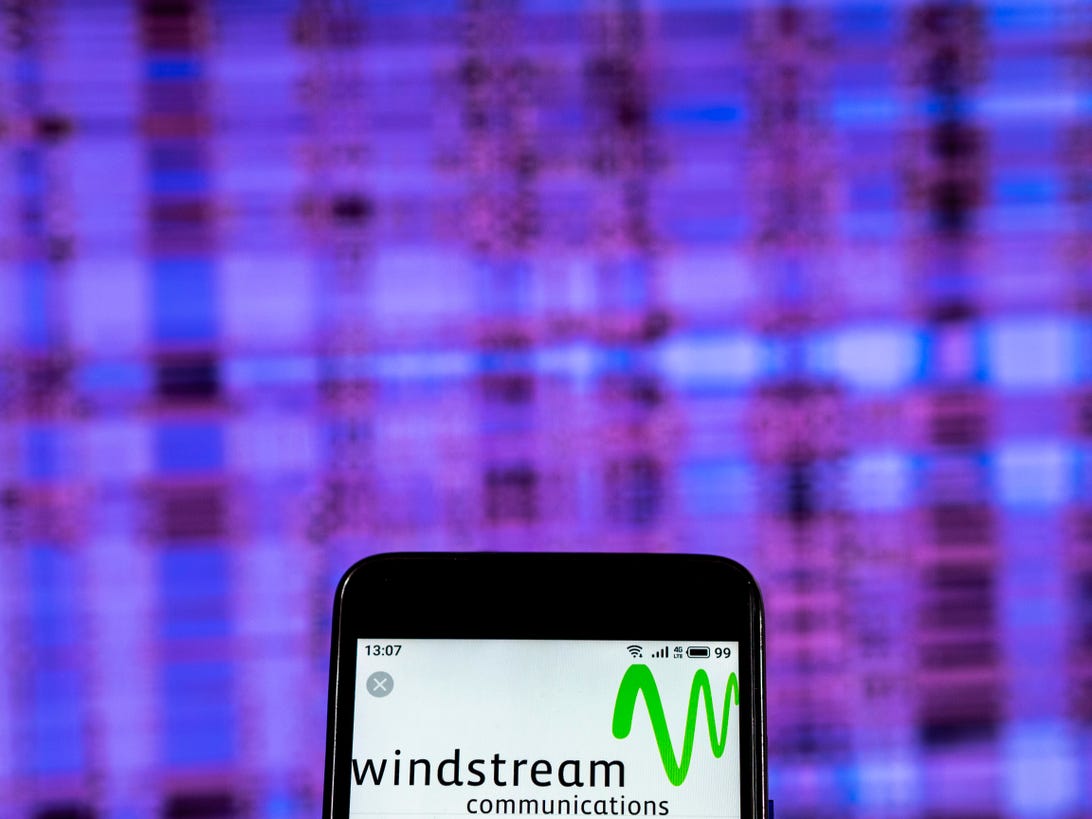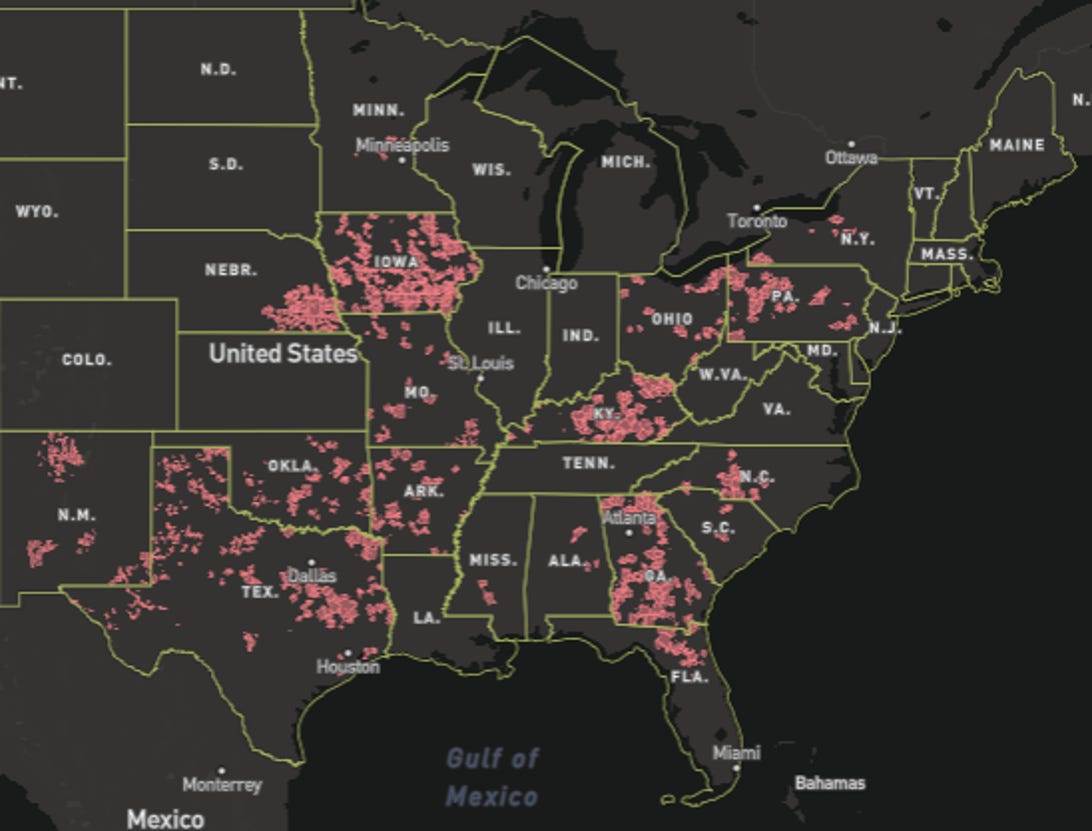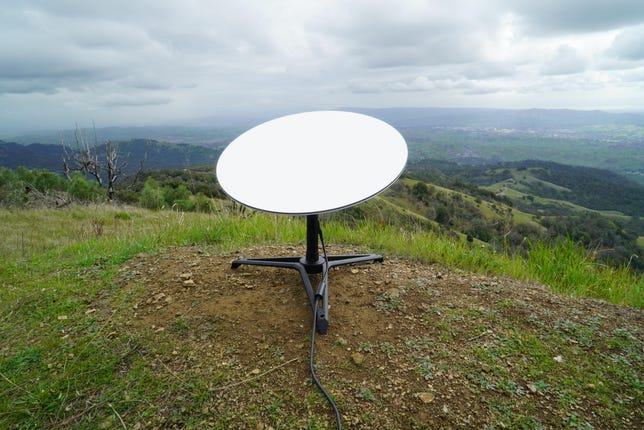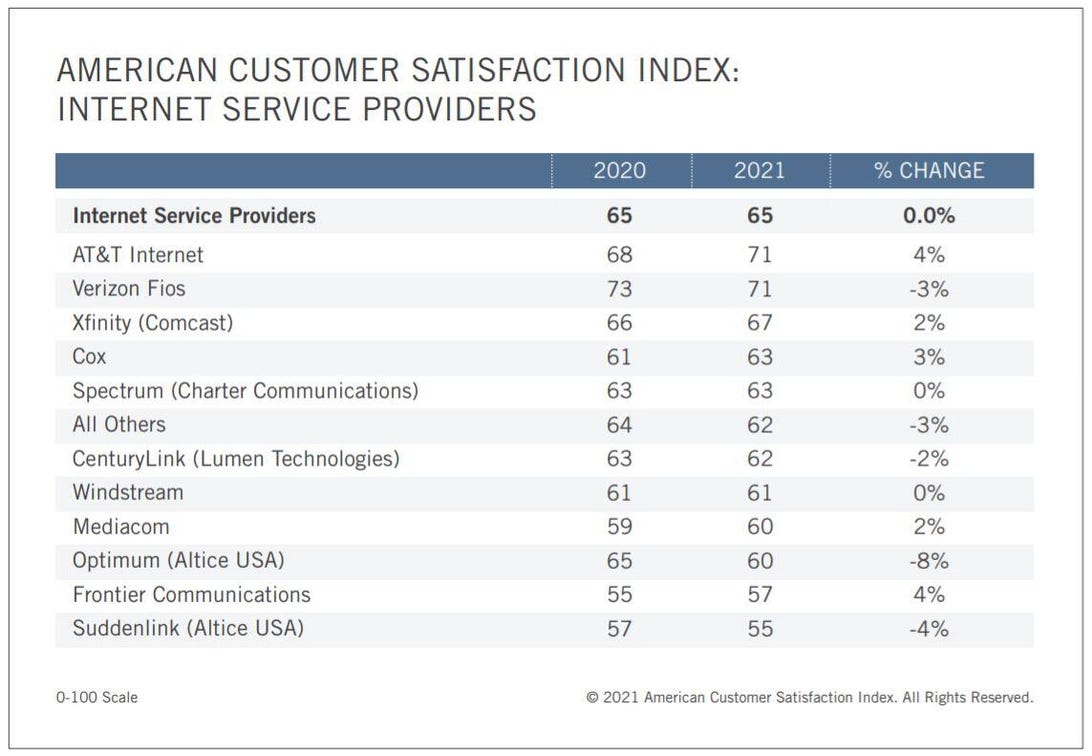
Igor Golovniov/SOPA Images/LightRocket/Getty Images
When you’re shopping for internet in rural areas, options are often limited to either satellite or whatever local provider happens to be available. If Kinetic by Windstream is that wild-card provider, your internet options are likely better than most across the broadband divide.
Kinetic (the brand name for Windstream’s internet service, similar to how Spectrum and Xfinity are the brand names for internet service from Charter Communications and Comcast, respectively) offers faster speeds than you’ll find in most rural areas and the internet plans are cheap, or at least it can be, for any region. Additionally, Kinetic plans come with unlimited data and no contract requirements, which is common among many providers but, again, may be harder to come by in rural areas.
Like
- Fast speeds in rural areas
- No data caps, no speed throttling, no contracts
- Fiber expansion in the works
Don’t Like
- Speeds and pricing vary widely by location
- No security plan included
- Below average customer satisfaction
If your internet options come down to satellite or Kinetic, you’re likely to get more bang for your buck with Kinetic. Sure, it’s likely going to be DSL internet, which isn’t exactly the fastest or most reliable internet type, but Windstream’s DSL network is equipped to deliver speeds faster than many satellite, fixed wireless or other DSL providers can. Plans are also likely to be cheaper, and of a better connection quality than satellite or fixed wireless service — and don’t discount the value of unlimited data. That said, speeds — and unfortunately also the pricing — vary by location, so the overall value of Windstream’s DSL service depends on what’s available at your address.
As you get closer to the cities and suburbs where Kinetic fiber-optic service is available, the fast speeds and low introductory pricing are even more enticing. However, speeds and pricing will again vary by location, and these areas typically come with more internet options, including a cable internet provider and perhaps another fiber-optic provider. In that case, you’ll want to compare Kinetic closely with other available providers to determine the best internet provider for your needs. Other than low introductory pricing (in some areas) and relatively fast rural internet speeds (again, in some areas), there isn’t a whole lot that stands out about Kinetic compared to other providers.

FCC/Mapbox
Large coverage area, small coverage percentage
Kinetic is available in 18 states: Alabama, Arkansas, Florida, Georgia, Iowa, Kentucky, Minnesota, Mississippi, Missouri, Nebraska, New Mexico, New York, North Carolina, Ohio, Oklahoma, Pennsylvania, South Carolina and Texas. Availability is particularly high in Georgia, Iowa and Kentucky, where coverage spans half the state or more; availability in other states is a bit more spotty.
In spite of the large coverage area spanning more than a third of US states, Kinetic is available to only around 2.75% of the US population, according to the most recent Federal Communications Commission data. The small coverage percentage isn’t a knock against Windstream, it’s just an indicator of how reserved Kinetic internet is to rural and suburban regions with low population density. For comparison, cable internet provider Cox Communications has a far smaller coverage area than Kinetic, but is available to more than twice as many people due to the fact that it operates primarily in metropolitan areas like San Diego, Phoenix and Washington, DC.
Broadband speeds available to 85% of DSL coverage area
Kinetic has the largest percentage of broadband availability I’ve seen from any major DSL provider, with speeds of 25Mbps or higher available to more than 85% of customers. More than half (64%, also according to the FCC), can get speeds of 100Mbps or higher. Competing DSL providers AT&T, CenturyLink and Frontier all have a lower percentage of available speeds at or above 25Mbps (67%, 64% and 33%, respectively) though it is worth noting that these providers also have significantly larger coverage areas.
Fiber has room to grow
As a DSL provider, Kinetic is a leader in delivering broadband speeds, but as a fiber provider, there is opportunity for improvement. Only about 20% of Kinetic’s network is fiber-optic, which is less than AT&T (30%), CenturyLink (38%) and Frontier (33%). That’s not to say Windstream is neglecting the need for greater fiber coverage. In fact, fiber expansion is currently in the works.
A Windstream spokesperson tells CNET that the company is “currently involved in a multi-year $2 billion fiber investment and rollout across the 18-state footprint” and that “by 2027, 50% of the network will have fiber available.” That seems like a long way off — and for the rural residents waiting for it, it probably is — but running fiber lines isn’t easy or cheap, which is why fiber is primarily reserved for areas with higher population densities. If Windstream runs fiber lines to 50% of its footprint, much of that will include rural and potentially underserved suburban areas, so kudos to Windstream for investing in fiber service where other providers have not, even if it takes them a few years to do it.
As fiber access improves, more Kinetic customers will have access to faster speeds, but for now, available speeds vary widely by location. Whether you can get DSL or fiber service from Kinetic will also play a significant role in available speeds and plan pricing, but even then, plans are subject to change from one market to the next. I’ll do my best to explain.
Kinetic by Windstream plans
Kinetic is a little different from other providers in how it structures internet plans. Basically, you start with a single plan, which could be any one of the plans listed below depending on your address. Then, if you like, you can upgrade that plan to a faster speed for an added fee (assuming that a faster speed is available).
Kinetic internet plans
| Plan | Max speeds | Connection type | Promo rate (first year) | Regular rate (after 12 months) | Data cap |
|---|---|---|---|---|---|
| Kinetic 50 | 50Mbps download, upload speed varies | DSL | $27-$60 | $55-$67 | None |
| Kinetic 200 | 200Mbps download, 200Mbps upload | Fiber | $37 | $55-$67 | None |
| Kinetic 400 | 400Mbps download, 400Mbps upload | Fiber | $37 | $55-$67 | None |
You’ll notice there’s not an official gig plan listed there, even though gig service is available from Kinetic, nor are there faster speeds listed for DSL service. That’s because higher speed tiers are upgrades to the base plan, not separate plans themselves.
For example, if Kinetic 200 is the offered plan in your area, you may have the option to upgrade to faster speeds for an added monthly fee. For $10 more per month, you could get speeds of 400Mbps, or 500Mbps for an added $20 per month and gig speeds for $30 more per month. That feels like an overly complicated way to do it, but I suppose it works from a company standpoint when you have multiple speeds available across a wide variety of small and large markets.
Plans and pricing are a box of chocolates
The Kinetic plan you can get, and the cost of said plan, will depend on your address. For DSL service, it’s possible that only a speed of less than 50Mbps will be all that’s available and, even though you’re getting less than the max speed offered in the plan, it may not be available for the lowest possible price ($27 per month). Residents of Bolivar, Missouri, for example, may only be eligible for speeds of up to 15Mbps starting at $45 per month while those in Albemarle, North Carolina, may be eligible for the full 50Mbps starting at $27. Additionally, it’s totally possible that DSL speeds higher than 50Mbps are available, but that would require a speed upgrade (and the additional fee).
Fiber service is a little less volatile as far as available speeds and pricing are concerned, but it’s still not one size fits all. In some markets, the starting speed will be 200Mbps. In others, it’s 400Mbps for the same price. Starting prices also seem to be somewhat inconsistent, and after 12 months the price could increase to somewhere between $55 to $67.
A sweet gig upgrade free for 3 months
One standard across all (eligible) markets is the free gig upgrade for three months. Regardless of whether you can get the 200 or 400Mbps plan, the upgrade to gig service will add $30 to your bill, but that only starts with your fourth month of service. That’s a $90 value over three months, and one that could let you try out gig speeds for an insanely low price.
After a service check in Lincoln, Nebraska, I found 200Mbps pricing starting at $20 per month (again with the fickle pricing, but that’s still a really good deal). With the free gig upgrade, that’s three months of gig service for only $20 per month, and $50 per month in months four through 12. If you can find a deal this good, whether from Kinetic or another provider, I’d recommend ordering it as fast as you can.
Even if Kinetic pricing isn’t that low in your area, a mere $30 (which, remember, is waived for the first three months) to upgrade from 200Mbps to gig service is generous. The same speed jump with Spectrum will cost you $60 extra ($50 per month for 200Mbps, $110 per month for gig internet).
Fees and such are more straightforward
Have I mentioned that Kinetic prices and speeds vary by location? In a welcome change of pace, fees and service terms largely do not. I say “largely” because it does appear the equipment rental fee can vary ($10 in most locations, but only $6 in a select few), but other than that, it’s all the same across all service areas.
At $10 per month (or $6 if you’re lucky), Kinetic’s Wi-Fi equipment rental is lower than most. You also have the option of using your own equipment and skipping the monthly fee, but doing so may take a while to really pay off, especially if you lock in that low $6 rate. It’s nice to know the option is there if you already own a compatible modem and router, or if you’d prefer to use a top-of-the-line mesh Wi-Fi setup.
The equipment fee is avoidable, but the internet activation fee ($50 upfront) is not unless you sign up for gigabit service. This is a separate fee from installation (which is included at no extra cost, whether self or professional), and I honestly don’t know what it’s for. The good news is that Kinetic currently offers a $100 instant credit when you order online, so you get back the activation fee and then some with your order.
Regardless of your location, plan and equipment choices, your Kinetic plan comes with unlimited data, no contract requirements and Windstream’s promise to never throttle your speeds. This should be a given from all providers but there are still some out there — ahem, Xfinity, ahem Mediacom — that impose contracts with early termination fees and data caps with overage fees.
Lots of security options, all for a price
Kinetic service comes with three internet security and tech support options that range from $10 to $15 per month depending on the level of security and support you choose. You can also skip Kinetic’s security options altogether.
Surprisingly, not all plans come with internet security software. Only the most expensive one, Total Secure, and least expensive one, Connect Secure, come with Kinetic Internet Security On The Go. The midlevel plan, Self Secure, comes with premium tech support and identity theft protection, but no internet security software.
Charging an added fee for premium tech support and identity theft protection is understandable, and most providers also offer some kind of similar security package, but I’d like to see basic internet security included with Kinetic plans. Even the cheapest Kinetic security plan will add $120 a year to your bill, which would cover the cost of nearly any antivirus software. Unless you foresee the need for premium tech support service, you’re likely better off going with the antivirus software that best suits your needs and skipping the added fees that come with Kinetic security plans.
Kinetic versus the competition
As a DSL provider, Kinetic is generally faster than similar providers, and if you’re lucky enough to be in a market with the $27 introductory pricing, Kinetic is also cheaper than most DSL providers.
As a fiber provider, there isn’t much to separate Kinetic from other fiber providers. Pricing is about the same, maybe a little cheaper with Kinetic in some areas. Speeds are about the same as well.
It’s unlikely you’ll have the option of Kinetic and other DSL or fiber internet providers, however, so let’s get down to comparing the two options you’ll probably have: Kinetic DSL and satellite internet, or Kinetic fiber and cable internet.

Satellite internet might be able to offer faster speeds than DSL in select regions, but Kinetic DSL offers better value, better latency and better reliability, with no data caps or contracts.
John Kim/CNET
Kinetic DSL versus satellite internet
DSL is almost always going to be the better option over satellite internet, so you’ll definitely want to check out Kinetic before committing to satellite.
Kinetic is going to be cheaper and will probably deliver faster speeds than satellite, though there are some locations that currently get speeds in the 10 to 20Mbps range while HughesNet plans come with 25Mbps. In some regions, Viasat satellite internet plans can hit speeds as high as 100Mbps. Even so, Kinetic still has some significant advantages, so you may find the slight speed sacrifice to be worth it.
For starters, you won’t have to worry about data caps with Kinetic, unlike satellite internet, which has the most strict data limits of any internet type. Satellite internet also comes with a two-year contract and a hefty early termination fee if you cancel before the two years are up. Kinetic does not lock you into a contract.
A DSL connection, while not perfect, will also offer greater reliability and lower latency than satellite internet. Rain and cloud cover won’t disrupt your DSL service, and latency is low enough to support online gaming, two conveniences you shouldn’t expect from satellite.
Kinetic fiber internet vs. cable internet
Like how DSL is preferable to satellite, fiber is often preferable to cable internet. You’ll get symmetrical upload speeds with fiber internet and a more reliable connection than cable. Even still, Kinetic versus cable could be a toss-up, depending on which Kinetic plans are available at your address and which cable providers offer service in your area.
If you can get the $37 pricing (or lower in some areas, apparently) for Kinetic’s 200 or 400Mbps plan, that’ll be a better deal than you’ll get from competing cable providers such as Mediacom, Spectrum and Xfinity. Mediacom and Xfinity do have lower starting prices ($20 per month for 60Mbps and $25 for 50Mbps, respectively), but they come with significantly lower speeds, plus a data cap and a contract in most areas. Spectrum, like Kinetic, does not enforce contracts or data caps, but you’ll be paying $50 per month for 200Mbps and $70 per month for 400Mbps with Spectrum.
For those who have the need for speed, Kinetic’s gig service is also lower priced than gig plans from most cable providers. Gig service from Kinetic could cost around $37 per month for the first three months, $67 thereafter until you reach a year of service, then $85 per month from the 13th month on (again, Kinetic pricing is different in every market, so don’t hold me to that). On the cable side, gig service could cost $80 to $110 initially, then spike up to well over $100 after 12 months. Gig service from Mediacom, for example, is $140 after 24 months.
In most instances, I’d recommend Kinetic fiber over cable internet. It’s probably going to be a bit cheaper and you’ll get the luxury of symmetrical download and upload speeds. That said, be sure to do your due diligence. If Kinetic fiber service is available, definitely check it out, but be sure to also compare it to plans and pricing options from other providers in your area.

American Customer Satisfaction Index
Below average customer satisfaction
Customer satisfaction research groups American Customer Satisfaction Index and J.D. Power both placed Windstream below the industry average in 2020 with a 61/100 and 680/1,000, respectively. The 2021 numbers aren’t out for J.D. Power yet, but the ACSI once again placed it below average with a score of 61/100. That wasn’t a decline year-over-year, but it wasn’t an improvement, either.
Below average customer satisfaction scores are concerning, but in Windstream’s case, I think it comes down to one thing: 80% of the Kinetic network is DSL. In 2021, it’s understandable why customers would not be satisfied with the slower, less reliable nature of DSL service. The outage-tracking site downdectector.com notes a recent outage on July 18 and two more in June, but some commenters claim to experience issues with Windstream on a regular basis.
All this is to say that I think it’s more of a network issue that is causing the low customer satisfaction rather than poor customer service or shady billing practices on Windstream’s end. As the Kinetic network continues to improve (again, the goal is 50% fiber coverage by 2027), I think Windstream’s customer satisfaction scores will likely follow suit.
The bottom line
Those in rural areas will find Kinetic DSL internet to be a better service and value than satellite. Kinetic fiber and cable internet are somewhat more closely matched, but it’s probable that Kinetic fiber will be the cheaper high-speed option as well. Kinetic pricing and available speeds vary widely by market, however, perhaps more so than any other major provider, so be sure to compare your options.


